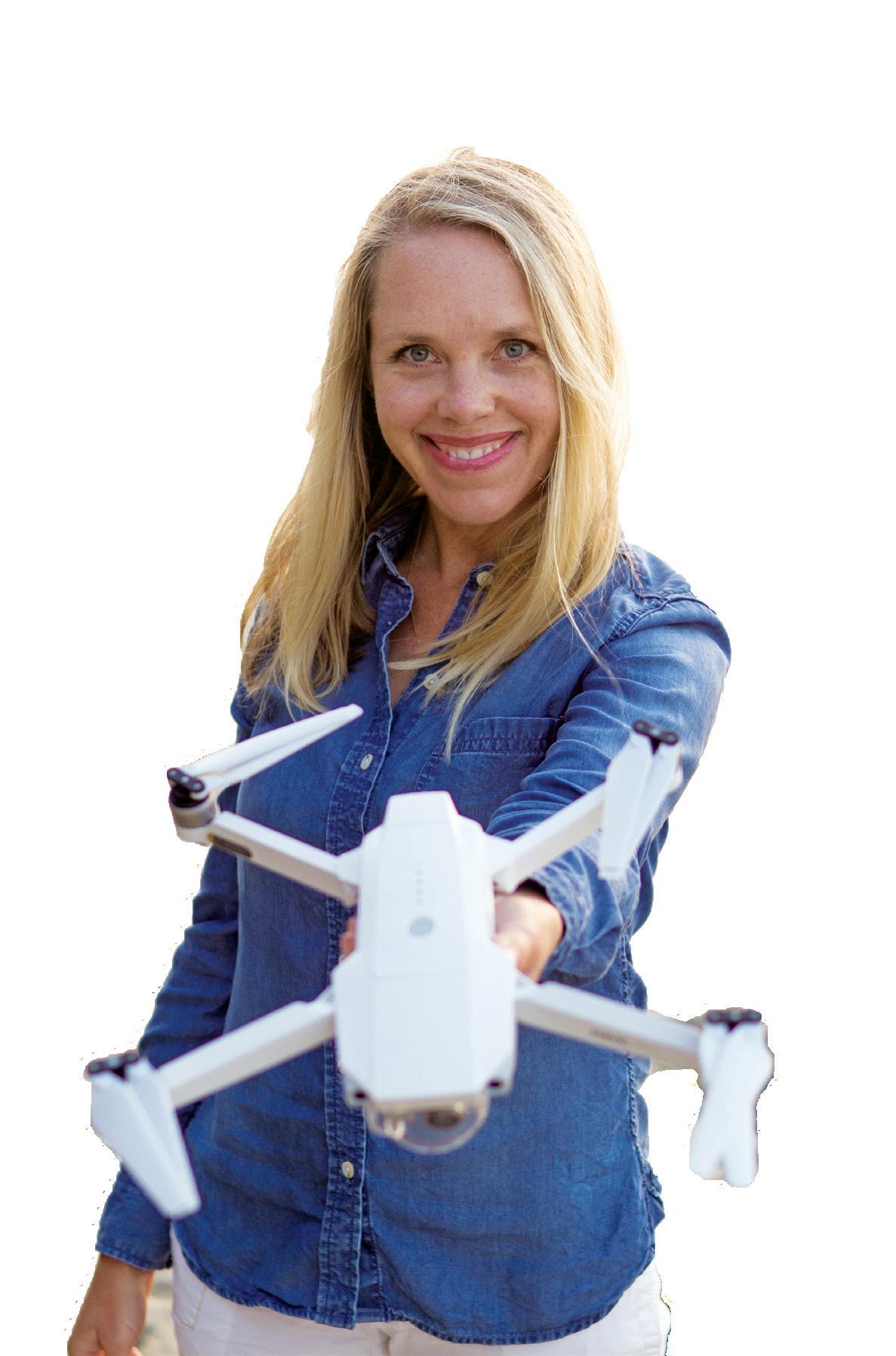
3 minute read
Alimosphere
Protecting Ocean Heritage
By Chelsé Craig
Alicia Amerson (BS 02) has always loved science. As a child, she read every book in her elementary school’s library that had anything to do with marine life. She found herself drawn to some of the largest animals ever to live on Earth, baleen whales. However, it wasn’t until she met Dr. Manuel Varela, an ENMU biology professor, that she truly believed she could succeed.
“He has an ability to make students feel like they’ve climbed Mount Everest at the end of a semester and become friends with every bacteria and virus on the way up!” Alicia praised.
Alicia earned her master’s degree in marine biodiversity and conservation at Scripps Institute of Oceanography in San Diego, California. While on a boat in Dana Point, she noticed a seagull flying over a whale. However, when she looked through her camera, she saw it was actually a drone. Drones, also called unmanned aerial vehicles (UAVs), have become popular over the years, but they can have adverse effects on wildlife.

Photo by Ben VanderGriend
Alicia created Alimosphere, a marine wildlife UAS task force, to help UAV pilots create flight plans that benefit humanity and respect wildlife. Designing responsible practices in the drone industry, she hopes to protect seabirds nesting on the shoreline, seals and sea lions pupping on beaches, and larger marine wildlife found in the pelagic ocean habitat (near the ocean’s surface). “We want drone pilots to think not only about the airspace regulations, but also about the wildlife that may be impacted from their flight operations.”
A drone pilot might think their one action doesn’t account for much, but they don’t know if someone flew before them, nor if someone will fly after. In reality, it’s the accumulation of those small impacts that have severe effects on the populations. While some animals may not outwardly show signs of stress, physiological stress may also be induced as a result of drone flight.
Alimosphere focuses on integrating drone technology into new applications for marine research.
“There are many innovative ways drones are collecting data for researchers such as large whale body condition, collecting whale mucus, assessing population abundance, and assisting in entanglement response,” Alicia said. “The drones are being used to detect marine debris, monitor sea level rise and beach erosion, track movement of sediment in watersheds and estuaries, count bird nests, and monitor ship traffic.
Alimosphere has partnered with several non-profits to conduct their research, and Alicia released her book, titled “Six-Word Lessons for Drone Pilots and Outdoor Enthusiasts: 100 Lessons to Make Drone Flights Safe, Ethical and Green for Wildlife and Humans.” She is also working to support women in the drone industry. Alimosphere recently worked with the Women and Drones organization to promote STEM for younger girls and mentor women business owners in the trade.
“Being a drone pilot is more than just flying a drone,” she said. “We have changed the way nature looks. We’ve built towns and cities and drone images capture our imagination. Now we must also use this knowledge to protect what is left of the wilderness and wildlife habitats around the world,” Alicia said. “I truly believe as individuals we can make a difference in the world.”










